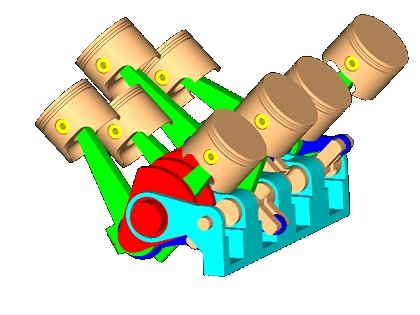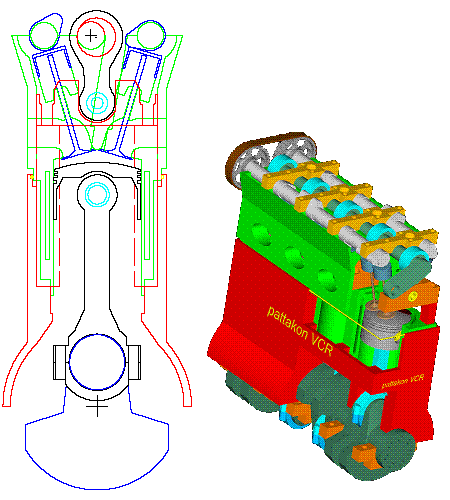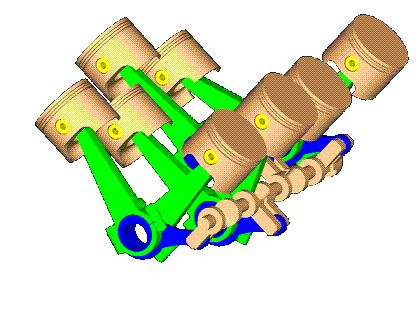Take a look at http://www.pattakon.com .
The patcrank VCR in a V-8:

All it takes is four slim and lightweight secondary connecting rods and one thin and lightweight crankshaft, i.e. 5 lightweight, and cheap to make, moving pieces in total, plus one slow moving control frame.
A modified V-8 patcrank VCR has as vibration-free-operation as the original conventional V-8, no matter what the selected compression ratio is.
The rev limit is as high as the rev limit of the original engine.
The range of available compression ratios of the patcrank VCR is as wide as desirable, for instance from below 7:1 to above 20:1.
A VCR can help the big displacement engines to pass current and future CO2 emission regulations. VCR is an alternative to Hybrid technology.
Thanks
Manousos
The patcrank VCR in a V-8:

All it takes is four slim and lightweight secondary connecting rods and one thin and lightweight crankshaft, i.e. 5 lightweight, and cheap to make, moving pieces in total, plus one slow moving control frame.
A modified V-8 patcrank VCR has as vibration-free-operation as the original conventional V-8, no matter what the selected compression ratio is.
The rev limit is as high as the rev limit of the original engine.
The range of available compression ratios of the patcrank VCR is as wide as desirable, for instance from below 7:1 to above 20:1.
A VCR can help the big displacement engines to pass current and future CO2 emission regulations. VCR is an alternative to Hybrid technology.
Thanks
Manousos


